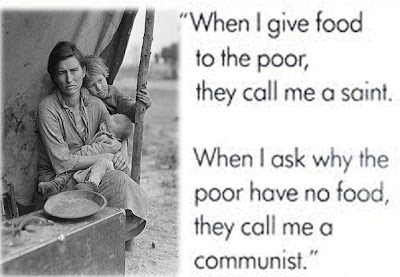(
click here for the English version)
Ar putea incepe in felul in care filmul lui
Woody Allen ne-o povesteste, intr-o
nostalgia store, o consignatie din acelea cautate de colectionarii pasionati de ce-i vechi si bun, cu discuri de vinilin si placi de ebonita, si caiete cu note muzicale un pic roase de vreme, cu afise de filme de acum saizeci de ani, cu carti tiparite la Paris pe la 1860, si cu toate lucrurile de soiul asta, care cer rabdare, sa fie rasfoite in liniste, in timp ce orele trec si se insereaza.
Este miez de noapte acum, aici in Paris si tocmai a inceput sa ploua. Esti inca acolo, in acea
nostalgia store, acea consignatie? Sau esti afara, plimbandu-te in bataia ploii, fara sa-ti pese? Cine e fata aceea care-ti zambeste?
Vrabiuta? Cum ar putea fi?
Edith Piaf, chiar ea e? Cineva fredoneaza un cantec fara cuvinte, stii cantecul, numai ca nu poti sa iti amintesti titlul, dar il stii, si cateva lacrimi incep sa iti curga. Este nostalgie? Nu, e bucurie, doar ca nu poti sa crezi in asa un miracol.
Este
Edith Piaf, sau mai degraba
Marion Cotillard? Mai conteaza? Sau este
Kiki, acea
Kiki din Montparnasse, si tu te lupti pentru dragostea ei cu
Man Ray?
Stai, cine-i fatuca, si unde esti acum? Este
Zelda, si tu esti pe
scarile din Montmartre? Acelasi cantec, fara cuvinte, il stii, inca nu iti aduci aminte de titlu.
Nu, nu este
Zelda Fitzgerald, imaginea asta a
scarilor din Montmartre vine din 1950. Ai ajuns aici din acea consignatie, acea
nostalgia store, lasandu-ti visele sa pluteasca fara graba? Sau te uitai tinta la vechiul afis cu o imagine din 1950, afisul pe care l-ai cumparat odata in micul butic din
New Hope? Il cumparasesi in 2003, acum era vara lui 2009, te pregateai sa te muti din apartamentul in care locuisesi vreme de sapte ani, urma sa te muti in alt oras, foarte departe, si afisul era acolo, iar tu trebuia sa il iei acum de pe perete, visele tale pluteau prin jur, iar nostalgia parea sa isi faca de cap. Asa ca ti-ai luat aparatul tau ieftin si ai facut o fotografie.
 (imagine a afisului care atarna in apartamentul meu)
(imagine a afisului care atarna in apartamentul meu)
Asa ca este 1950, asta am stabilit-o, si esti in Paris. Este miezul noptii si tu esti pe strada, in ploaie. Si cantecul acela, fara cuvinte, un cantec de dragoste si nostalgie. Si incepi sa te gandesti la o epoca mai veche, al treilea deceniu al veacului,
Anii Nebuni,
Les Années Folles, pentru ca iti amintesti de alt film, a fost singurul film facut de
Mirea Alexandresco.
Mirea, un om care s-a intamplat sa imi traverseze viata de doua ori. Odata in Paris, in 1945, de abia ma nascusem, si mama a primit pentru mine in dar dela parintii lui
Mirea caruciorul care fusese al lui, si apoi, zeci de ani mai tarziu, pe la inceputul anilor optzeci, cand
Mirea a venit la Bucuresti pentru o scurta vizita, impreuna cu sotia si cu fetia lui. A murit prematur candva dupa 1990. I-am vazut filmul la televizor, cu mult timp in urma.
Azi am descoperit pe web imaginea unui afis pentru
Les Années Folles. Un afis de colectie, fara indoiala, cu propria lui istorie: a fost odata impaturit (ups!), apoi pastrat intins pentru o lunga perioada (lasat sa-si revina in forma, ca sa zicem asa), iar un pic din hartia afisului s-a rupt chiar sus de tot. Afisul era folosit in cinematografele belgiene, asa ca are titlul filmului si in franceza, si in flamanda (
Zotte Jahren). A fost scos la licitatie in 2011, si vandut pentru zece dolari.
Ei bine, afisul asta m-a adus inapoi in Parisul anilor douazeci, erau acolo
Hemingway si
Scott Fitzgerald, si toti ceilalti, si
Gertrude Stein tocmai ticluind termenul de
Generatie Pierduta. Si
Buñuel, si
Dalí. Chiar asa, era el,
Dalí, sau
Adrien Brody, jucandu-l pe
Dalí in filmul lui Woody Allen? Pentru ce imi tot revine filmul asta in minte? Vorbesc acum cu
Dalí, despre plimbarile mele prin ploaie pe strazile pariziene pustii, in miez de noapte, rasfoind decenii, iar el nu pare surprins. Este normal, imi spune, timpul nu este decat o conventie, tine-o asa,visand.
Era acesta Parisul in care voiam sa fiu? Poate ca nu, visele mele pluteau catre o epoca mult mai indepartata, aceea a lui
Emonds si
Marville, un oras pe cale de a-si schimba fata, pe la mijlocul veacului al nousprezecelea. Strazi batrane urmau sa dispara, maestrii fotografi luau poze in graba, sa ramana marturii ale caselor vechi, si ale vechilor caldarme. Si arta picturii isi schimba atunci fata. La
Barbizon artistii descoperisera
plein air-ul, iar impresionismul batea la usa. Da, asta era Parisul in care voiam sa fiu.
Si poate ca drumul ar trebui sa inceapa in anticariatul acela mititel, de pe
Rue du Cherche Midi, chiar langa casa in care imi petrecusem primii trei ani de viata. Revenisem pe strada aceea in 1999, si intrasem in anticariat. Un loc in care sa rasfoiesti carti batrane, si fotografii ingalbenite de vreme, desene si gravuri, si sa iti lasi visele slobode.
Si iata-ma din nou afara. E miezul noptii si ploaia a inceput din nou (
ca sa-l citez pe prietenul meu Dan, care il cita la randul lui pe Woody Allen). Si deodata cuvintele cantecului mi-au revenit in minte, este
Plaisir d'amour, a fost scris la Paris, numai ca mult, mult mai devreme, in 1780!
Berlioz avea sa compuna apoi muzica, un pic mai tarziu, in prima jumatate a veacului al nouasprezecelea.
Si e atat de frumos ca lacrimile mi se amesteca in aerul rece cu picaturile de ploaie. O sa revin, sunt multe de spus.
(Filmofilia)Labels: My Paris
 (http://www.benzinsider.com/2011/02/merc-3-others-struggling-to-meet-luxury-car-demand-in-india/india_cars_streets/)
(http://www.benzinsider.com/2011/02/merc-3-others-struggling-to-meet-luxury-car-demand-in-india/india_cars_streets/)






































